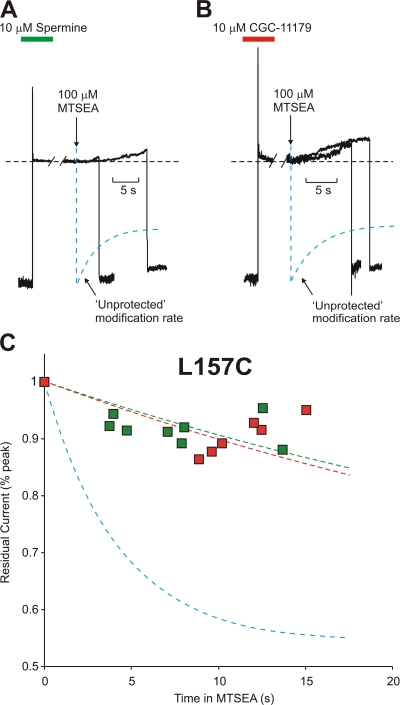Figure 4.
Protection of residue 157C by spermine or CGC-11179 occupancy of the Kir6.2 pore. Patches expressing Kir6.2[N160D][C166S][L157C] were preblocked by voltage steps to +50 mV in either (A) 10 μM spermine or (B) CGC-11179. While held continuously at +50 mV, patches were moved into a polyamine-free solution and, where indicated by the downward arrow, exposed to a polyamine-free solution containing 100 μM MTSEA. After variable intervals in 100 μM MTSEA, patches were repolarized to −50 mV (to assess the extent of MTSEA modification) and immediately removed from the MTSEA-containing solution. The unprotected modification rate (dashed blue line) represents the rate of MTSEA modification of L157C channels in polyamine-free conditions (from Fig. 2 B), and is superimposed on the raw data for comparison. (C) Modification of channels preblocked with either CGC-11179 (red symbols, τ = 52 ± 11 s) or spermine (green symbols, τ = 44 ± 7 s) was measured in multiple patches after varying intervals in 100 μM MTSEA to determine the time course of modification when the pore is occupied by either polyamine. The unprotected modification time course of L157C is indicated by the blue line (τ = 4.2 ± 0.7 s). Preblocking with either spermine or CGC-11179 strongly protects against MTSEA modification at residue 157C.

